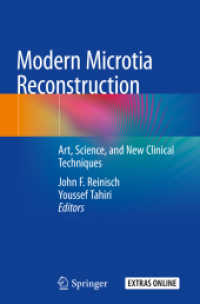- ホーム
- > 洋書
- > ドイツ書
- > Humanities, Arts & Music
- > Linguistics
- > english linguistics
Full Description
The monograph reads Sir Henry Rider Haggard's historical romance Cleopatra (1889) with the aim to delineate the last decade of the Victorian period, shed light on the attempt to forge identity, and demonstrate the author's preoccupation with the concept of coincidentia oppositorum as the basic principle of life, death, and regeneration. Through the mythic figure of Cleopatra, the simulacrum of the goddess Isis, the writer underscores that death can be defeated and immortality attained. By simulating ancient Egypt, submerging in the unconscious, withdrawing from the ephemeral world and espousing the spiritual, he came to terms with his fear of mortality, rejuvenated his self, and redeemed his soul. In perusing the three papyri, discovered in the hero's sarcophagus, the reader traces the progress from the Ptolemaic degenerate court to that of Isis.
Contents
Contents: Sir Henry Rider Haggard - Death - Fin de siècle - Legend of Cleopatra - Carl G. Jung's archetypes - Christian concepts - Ancient Egyptian history - Roman Empire - Jean Baudrillard's theory of simulation - Walter Pater's principle of flux - Mircea Eliade's view of transformation - Joseph Campbell's concept of the hero - Allegory and symbolism.








